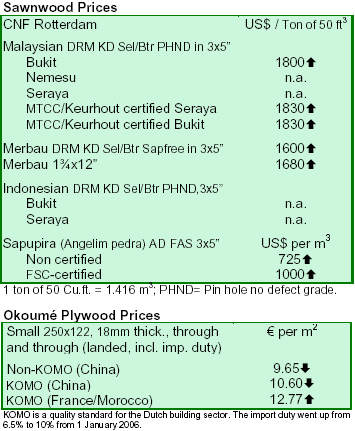|
Report
from the UK
Mixed perceptions on economic outlook
The Bank of England base rate was again held at 4.5%, but the Bank Governor told business leaders that recent
fluctuations in the stock market reflected an economic outlook which was ¡®far from certain¡¯. Inflation was
volatile while oil and gas prices were beginning to have an impact on household spending. However, he stressed
inflation was not a serious concern. On the other hand, accountants BDO Stoy Hayward warned early in the
month that inflation was a real concern and still believed that the Bank of England would raise interest rates later
this year. They thought that the strong housing market and an upturn in consumer spending would act as major drivers of future economic growth.
Retail sales volumes rose at their fastest pace in one and a half years, according to the Confederation of British
Industry (CBI) monthly survey, but retail jobs were lost at the sharpest pace in the survey¡¯s 23 year history. The
British Retail Consortium said that consumer confidence remained fragile and an increase in interest rates was the
last thing consumers and retailers needed. Freight rates from the Far East were set to rise by 30% according to
the Far East Freight Conference, which would probably affect manufactured goods to a greater extent than raw materials.
House prices grow at sluggish rate
House price growth was slow in May for the second consecutive month, according to the Nationwide
Building Society. Prices rose just 0.2% and annual house price inflation fell to 4.7%. The price of a typical house
in the UK is now ¡ê164,632, almost ¡ê7,500 more than May last year. This is equivalent to a price increase of
just over ¡ê20 per day over the last twelve months. The market demand will depend on interest rates. Looking
further ahead, Experian Business Strategies, a consultant,
expects total construction output in the UK to expand by 13% to 2008.
SE Asian exporters prefer sales in continental Europe
British importers are reported to be facing greater difficulties in sourcing plywood from Indonesia and
Malaysia than importers in Continental Europe. Since sales prices for Malaysian and Indonesian plywood are
slightly higher in the continental European markets than in the UK, Indonesian and Malaysian plywood producers prefer to sell to those markets.


Report
from Netherlands
Building sector on track for a good year
There are increasing signs that the economic situation in the Netherlands is improving: unemployment is falling
and readiness to invest is growing. After 6 difficult years, the Finance Minister reported a budgetary surplus of at
least .2 billion in April and expectations of a surplus for the whole year. This is in contrast to last year forecast of a 1% deficit.
With improved consumer trust, the building sector is doing quite well. The revival is evident according to
analysts and will not be short-lived. In the first quarter of 2006, 12,500 new houses were completed, up 31% from
2005. The Central Planning Bureau (CPB) forecasts that the building sector is on track of having a good year.
Permissions for housing starts rose 38% compared with January-March 2005. However, the revival is more
concentrated on the central and western part of the country. The Minister of Housing, Mrs. Sybille
Dekker, is devoting efforts to bring down the shortage in the housing sector from the current 2.5% to 1.5% by 2010,
hence a lot of new housing units will need to be built.
Demand growing strong amid supply concerns
Global demand for timber is bigger than the current supply. Dutch demand for graded sawn timber from
Peninsular Malaysia is at about 130,000 m3. With the current growing demand, the Dutch market would
require an additional 10-15% (13,000-19,000 m3). Dutch importers doubt that Peninsular Malaysia can cope with
the additional demand. Sourcing African mahogany, sipo and sapele is not viable as
sawnwood production of these species is already at its peak. In turn, the supply situation
in Brazil remains critical with a backlog of harvest permits pending authorization.
The current situation of meranti sawnwood in the Dutch market is even more critical. Sales take place at levels far
above .900 per m3 while volumes offered by Malaysian exporters keep reaching new lows. Analysts noted that
never before was dark red meranti (drm) as scarce in supply as today. Traders that manage to get a hand on
any parcel do not dare to bring out a counter-offer: the parcel would go straight to another buyer. Not
surprisingly, 3x5¡± non-certified drm is hitting the $1,800 per ton mark.
Supply from Brazil poised to improve
The situation in Brazil is said to have improved slightly as logging seems possible again to a certain extent after
authorities have lifted some restrictions. Weather conditions have improved and there are reports that by
the end of June it should be possible to repair inroads/bridges in the jungle and start log-selection and
felling. Yet, it will still take some time before fresh parcels of squared edged and kiln dried materials land in
Europe. In the meantime, the pressure on landed stocks will remain and erode availability further, leading to
more price increases (e.g. in sapupira sawnwood). This is expected to be the case even during the summer holiday
season in Europe, as it will take considerable time before
significant replenishment of stocks can take place.

|